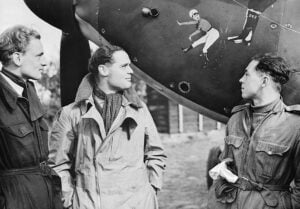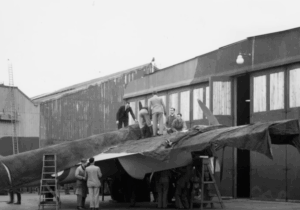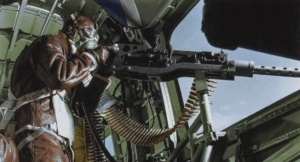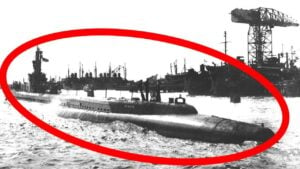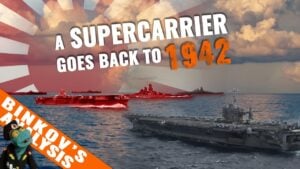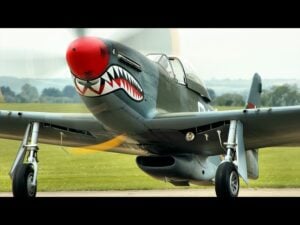How The SAS Destroyed 37 German Planes
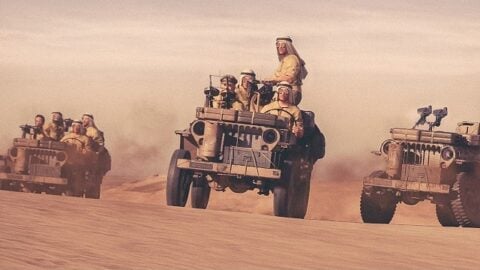
YouTube / Yarnhub
On the night of July 26, 1942, the desert erupted in chaos. Major David Stirling and his elite L Detachment, better known as the fledgling Special Air Service, slipped deep behind enemy lines to strike a German airbase at Sidi Haneish, Egypt. With Captain Paddy Mayne at his side, Stirling unleashed a lightning-fast assault that left rows of Luftwaffe aircraft burning and the enemy reeling.
The raid was over almost as quickly as it began, but for the commandos, the real battle had just started, escaping through the endless desert while German patrols scoured the skies above.
Jeeps in the Egyptian Desert
In July 1942, a column of 18 jeeps winds through the treacherous North African landscape. Major David Stirling leads the British special forces on a mission to attack a critical German airfield, 230 miles northwest of Cairo.
Then, the black of the night is replaced by hundreds of bright lights. At first, he thought they were spotted. However, only when the roar of an aircraft’s engine pierces the silence that he realizes what’s happening. One of the Luftwaffe planes is about to land at its target.
On his left are SAS legends Capt. Paddy Mayne and Lt. Carol Mather. On his right was a unit from the French SAS with French leader Andre Zirnheld waiting for Stirling’s command.
The Attack
The jeeps rush in, as they try to tear down any aircraft they hit into pieces. They let loose their guns on parked German planes, blowing Stuka dive bombers into pieces, and then turned their fire on the Bf-109 fighters. None is spared.
Satisfied, Stirling gives a go-ahead and continues their rampage of destruction down the taxiway. However, that short break gave the Germans time to regroup. A couple of them dashed for a defensive position, grabbing a 20mm Breda anti-air gun and a couple of portable mortars. They fire their anti-air guns and Italian Breda cannons wildly at the British soldiers. However, the men of the SAS did not let up. Their fire rips through the enemy position, and Breda gunners and mortar crews are overwhelmed as they fall one by one, with the survivors fleeing for their lives.
The Second Run
Among the debris, they spot a Bf-109 still intact, and they open fire, turning it into a pile of metal scrap. They then retreat. On their way back, Paddy Payne spots an untouched Ju-52 among the wrecks. He jumps out of the jeep, grabs a bomb, and places it on top of the transport’s wing. The Ju-52 explodes into flames as the SAS men speed off into the night.
Stukas Approach
Knowing that German planes would be after them, the jeep split into four groups. One group headed by Lt. Carol Mather. As dawn broke, they hid their jeeps in thick bushes and decided to cook breakfast. Then, a German dive bomber passes overhead, but later breathe a sigh of relief realizing the Germans haven’t seen them. As they were about to continue, they spotted another, then another. All men ducked into the bushes to hide.
By then, the French group is dangerously exposed. They too heard the roar of engines from the distance. They’ve been spotted, and in a flash, bullets rain down on their positions. While this is happening, Stirling’s team is burying their fallen comrade, John Robson. But the quiet service was interrupted by the sound of an engine. They freeze, and a Stuka bomber flew above them. Thankfully, it didn’t spot them and flew on.
Under Attack
Back in the French camp, the Stukas keep attacking for several minutes until they run out of ammo. Two of their three jeeps are wrecked, and some of their men are injured, particularly Zirnheld, their leader. They head for the remaining jeep and speed away.
Night falls at last, and Mather’s group pushes on through the desert. They found their rendezvous point and were joined by Paddy Mayne’s unit, who didn’t face much resistance. Stirling’s men are also on their way back, but one jeep loses a tire, and the men have to abandon it and jump into the other. However, they couldn’t find any of their landmarks; they’re lost, and food and water are running low.
Before long, they come across a steep escarpment- they’re stuck. The navigator heads on the edge of the cliff to find a way down. When he heads there, his eyes lit up. On the bottom are British jeeps, parked at the rendezvous point. Stirling’s group finally reaches their hideout on July 29, two days after the raid, but it’s not a joyous occasion. Zirnheld, the French group’s leader, died from his injuries.
Aftermath
David Stirling would be awarded the Distinguished Service Order and the Order of the British Empire for his outstanding service. A few months later, the detachment would be known officially as the “Special Air Service.” A poem would be found among Zirnheld’s belongings. Now it is known as the “Paratrooper’s Prayer” and the official poem of the French airborne forces.














